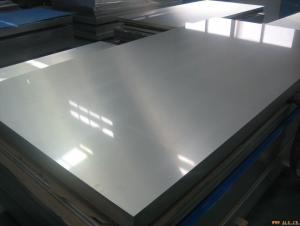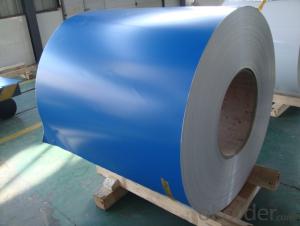Wholesale 1100 Aluminum Sheets - Aluminium Hot Rolled Alloy Plates Stocks with Best Price
- Loading Port:
- Shanghai
- Payment Terms:
- TT or LC
- Min Order Qty:
- 8 m.t.
- Supply Capability:
- 4000 m.t./month
OKorder Service Pledge
OKorder Financial Service
You Might Also Like
1.Structure of Product Description
Cold rolled aluminum sheet, hot rolled aluminum sheet, checkered sheet,
mirror finish aluminium sheet are widely used in the field of many different fields, etc.
te detailed grade are as follows: 1010, 1050,1060,1100, 2024, 3003, 3005,
3105, The temper is include H14, H22, H24, H44,H112,H114,etc.
2. Main features of the product
a.Competitive price
b.Frist-Class Service.
c. Shortest service.
3. Image.

4. Product detailed sizes:
1000mm*2000mm, 1219mm*2438mm,1500mm*3000mm, etc.
5. FAQ:
What is the quality standard?
---Usually our standard is GB3880-2006 or others.
What is the width range?
What is the MOQ for your products yet?
Where is your client from?
---Normally it is from Japan, USA, ENGLISH, SINGAPORE, ETC.
What is your mainly products?
---Normally they are aluminum sheet, checkered sheet,
mirror finish aluminium sheet and the aluminium casting coil, etc.
- Q: can the oxide film on the surface of aluminum sheet prevent the erosion of acid liquid? Why?
- yes, acid can react with aluminum oxide , generating salt and water, but its anti-corrosion will be stronger if oxide film on the surface is enough dense.
- Q: Can aluminum sheets be plasma cut?
- Yes, aluminum sheets can be plasma cut. Plasma cutting is an effective method for cutting aluminum sheets as it utilizes a high-temperature plasma arc to melt and remove the metal, resulting in clean and precise cuts.
- Q: What kind of welding rod should be used for aluminum plate, welding and welding?.
- Ask for advice, the simplest and the most primitive way, sincerely ask for adviceChasing the answerThe welding method is the most original welding welding, but have difficulty, need certain skills. The simplest is not easy to say, if welding hand arc welding, in fact, the use of hand arc welding is relatively simple, and welding carbon steel is the difference between the welding speed, requiring faster response to the welder on the line. If there is no welding foundation, we can use TIG welding or MIG welding, both of which are simpler to learn, that is, the welding equipment that needs to be purchased is more expensive.
- Q: Is it suitable to use aluminum sheets as roofing materials in areas with high temperatures?
- <p>Yes, aluminum sheets can be used for roofing materials in hot climates. Aluminum has a high thermal conductivity, which means it can quickly dissipate heat, helping to keep buildings cooler. It also has excellent resistance to corrosion, which is beneficial in areas with high humidity or salt air. Additionally, aluminum is lightweight, easy to install, and can be recycled, making it an environmentally friendly option. However, it's important to ensure proper ventilation and insulation to maximize its performance in hot climates.</p>
- Q: The difference between aluminum plate and aluminum plate
- Aluminum row is aluminum profile! Cheapness! The manufacturing process is different. The performance of aluminum plate will be higher! I hope you can adopt it! Is there anything you'd like to inquire about?!The data from Suzhou Juteng Metal Technology Department
- Q: What is the typical sheet size tolerance for aluminum sheets?
- The typical sheet size tolerance for aluminum sheets is typically around +/- 0.005 to 0.010 inches.
- Q: What will reflect light more- aluminum foil or white paper?
- Indestructible okorder /
- Q: What are the different grades of aluminum sheets?
- The different grades of aluminum sheets include 1100, 3003, 5052, 6061, and 7075.
- Q: When water continually sprays on the aluminum sheet, how to avoid corrosion of aluminum sheet and keep its water resistance?
- Don’t worry about it, after aluminum contacts water or air, a layer of oxide film will generate on its surface to separate aluminum from the water or air and protect it, so it won’t be erosive.
- Q: There are about 200 holes on the aluminum plate to be machined. There are 100 M12 thread holes, and the rest are 15MM through holes. The tolerance is +0.02. Seeking detailed processing technology, is the first hole or first processing plane, how to control the amount of deformation of the plate, if the milling process can not guarantee flatness, on the grinder, then the 2 surfaces to stay 2MM margin? Are there any 15MM through holes that can be used to maintain tolerances, or do they need to be boring?. Great God advice, the best detail. Aluminum so much done before, no experience, if it does it scrapped.
- Brother, I want to tell you first, the aluminum grinding machine is very rare! Because the aluminum sticky grinding wheel!No money, people are: 1., flying base level, thickness to 26.5 low point! 2. turn the face, press 4 sides, drill rough. The 3. lock bolt is in the hole you hit! Notice here that the lock must be locked one by one! Do you think the workpiece completely tied to lock dead in the fixture, and then processing the thickness to 25.6, the Kong Xian crude drilling reamer locking bolt end processing in place, lock 4. replacement bolts, the original lock bolt hole processing in place! 5., the final flying surface, according to each side of the 0.3 to fly surface, flying surface fixed method, you can use hot melt adhesive or hard rubber mud to fix the workpiece 4 sides and forming the inner hole!The rich person is the vacuum sucker, the base level as much as 26.5, turn over the surface of the vacuum sucker, forming directly!Hope to adopt, typing hard enough!
Send your message to us
Wholesale 1100 Aluminum Sheets - Aluminium Hot Rolled Alloy Plates Stocks with Best Price
- Loading Port:
- Shanghai
- Payment Terms:
- TT or LC
- Min Order Qty:
- 8 m.t.
- Supply Capability:
- 4000 m.t./month
OKorder Service Pledge
OKorder Financial Service
Similar products
Hot products
Hot Searches
Related keywords




























